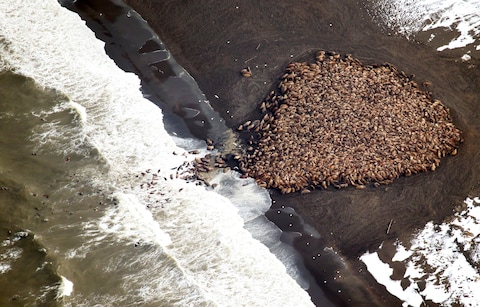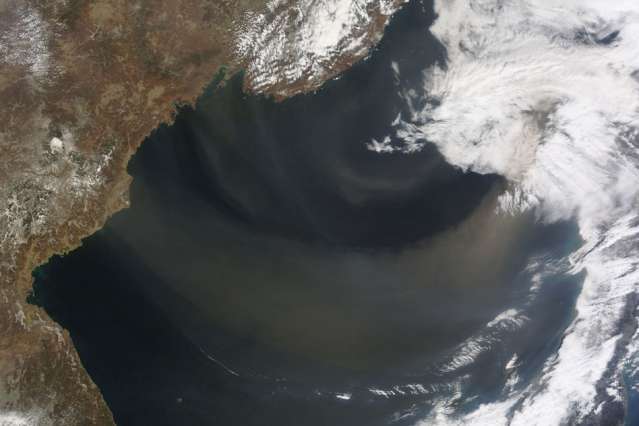1. SHWEEKEND Begins!
I may have had a lot of plans this weekend but, those all went out the window after I remembered that this weekend is Discovery’s SHWEEKEND. Concerned that you had to wait until next year for another dose of Shark Week? You’ll be thrilled to know that is not the case! Saturday and Sunday nights will have a number of shark programs on. Sea Save is looking forward to them all but, we are particularly interested in watching the MythBusters vs. Jaws episode on Saturday night. In honor of the 40th anniversary of “Jaws”, MythBusters will put some science behind the film. Read more…
———————————————–
2. Shark Fin Substitutes

This month, officials in Brooklyn seized more than 700 pounds of shark fins. This case was the first that was prosecuted under the 2014 NY law that banned the possession, sale, and distribution of shark fins. A New York Times article this week discusses the many fin and soup substitutes that the Chinese community has adopted. Stores have started to sell artificial shark fin made from muug bean and have suggested using sea cucumber instead of the fin. Unfortunately, shark fin trade is still legal in the neighboring state of New Jersey so many consumers resort to crossing state lines to purchase the fin cartilage. Read more…
———————————————–
3. Desert Storms May Affect Ocean Phytoplankton
This week, scientists from MIT, Columbia University, and Florida State University published a research paper discussing the impact that the desert storms have on the oceans. Dust storms in the deserts of Mongolia and China send clouds of particulates into the atmosphere. The dust, containing minerals like iron, will ultimately settle in the ocean. Iron is an essential nutrients for many species of phytoplankton and this iron increase will impact the organism populations. The iron stays in 150 meters of the ocean’s surface for around six months before sinking to the deep ocean. This gives the phytoplankton a relatively short time to absorb the iron. Therefore, to maintain the populations, the ocean will need a continuous supply of iron. Read more…
———————————————–
4. As Ice Retreats, Walruses Flee to Shore
 The US Fish and Wildlife Service estimates that between 5,000 and 6,000 walruses are not seeking shelter on the Alaskan shore. Walruses will normally use ice floes as a resting place at sea. With the increase in melting ice as a result of climate-change, more and more walruses have been found on shore every year. It is essential that humans do not disturb these populations. Disturbances can cause walruses to stampede into the water and trample the small members of the heard in the process. These herds will likely remain on shore until October when the sea ice refreezes. Read more…
The US Fish and Wildlife Service estimates that between 5,000 and 6,000 walruses are not seeking shelter on the Alaskan shore. Walruses will normally use ice floes as a resting place at sea. With the increase in melting ice as a result of climate-change, more and more walruses have been found on shore every year. It is essential that humans do not disturb these populations. Disturbances can cause walruses to stampede into the water and trample the small members of the heard in the process. These herds will likely remain on shore until October when the sea ice refreezes. Read more…
———————————————–
5. Federal Government Investigating Alaska Whale Deaths
 According to the National Oceanic and Atmospheric Administration, 30 large whales have died in Alaska since May. NOAA has defined this as an “unusual mortality event”. Scientists are testing water for bacteria, viruses, and biotoxis that may be prompting this phenomena. It is likely that is is a result of the major algae bloom that is stretched from central California to Washington. Read more…
According to the National Oceanic and Atmospheric Administration, 30 large whales have died in Alaska since May. NOAA has defined this as an “unusual mortality event”. Scientists are testing water for bacteria, viruses, and biotoxis that may be prompting this phenomena. It is likely that is is a result of the major algae bloom that is stretched from central California to Washington. Read more…
———————————————–
6. 3D Printed Fish Can Detect and Remove Toxins From Liquid
 What’s the next scientific development to help the preservation of our ocean? Tiny microrobotic fish! These 3D printed fish are only 120 microns long and 30 microns thick, smaller than a human hair. Scientists have added substances to the fish that are able to detect and absorb toxins. Although these fish are still in an experimental phase, it is possible that they may be able to detoxify contaminated liquid. According to researchers, it would be possible to print manta rays, sharks, and even bird shaped microbots! Read more…
What’s the next scientific development to help the preservation of our ocean? Tiny microrobotic fish! These 3D printed fish are only 120 microns long and 30 microns thick, smaller than a human hair. Scientists have added substances to the fish that are able to detect and absorb toxins. Although these fish are still in an experimental phase, it is possible that they may be able to detoxify contaminated liquid. According to researchers, it would be possible to print manta rays, sharks, and even bird shaped microbots! Read more…
———————————————–
7. Why NASA’s so Worried that Greenland’s Melting Could Speed Up
On Wednesday, NASA held a briefing on its “intensive research effort into the rate and cause of sea level rise”. The agency now reports that the ocean level is rising at a rate of 3.21 millimeters per year. Although Antarctica contains more ice, Greenland is losing ice mass considerably faster than Antarctica. Right around a gigaton a year. Yes, this was a new unit to us as well. A gigaton is a billion metric tons and is equal to .74 mm of sea-level rise per year. Ice sheet melting does not occur in a linear fashion and is dependent on a number of environmental factors. NASA has launched a research project to measure the hydrology atop the Greenland ice sheet to determine the actual amount of water during the melt season. Read more…
———————————————–
8. Sea Ice: Ancient Oceans Birthed Diamonds

This month, a journal entry in Nature reported that diamonds can form with the help of ancient saltwater. Diamonds crystallize under extreme heat and pressure in the Earth’s mantle layer and are brought to the Earth’s surface through powerful volcanic eruptions. Many scientist believe that diamonds actually crystallize from some kind of fluid. After analysis, it is possible the fluids from the oceanic crust react with the solid continental rocks to form the right mixture for diamond crystallization. Read more…
———————————————–
Be sure to “LIKE” http://facebook.com/SeaSave to ensure our “Week in Review” is delivered to your newsfeed every Thursday.
Sea Save Foundation is committed to raising awareness of marine conservation. The Week in Review is a team effort produced by the Sea Save staff to provide a weekly summary of the latest in marine research, policy, and news.







